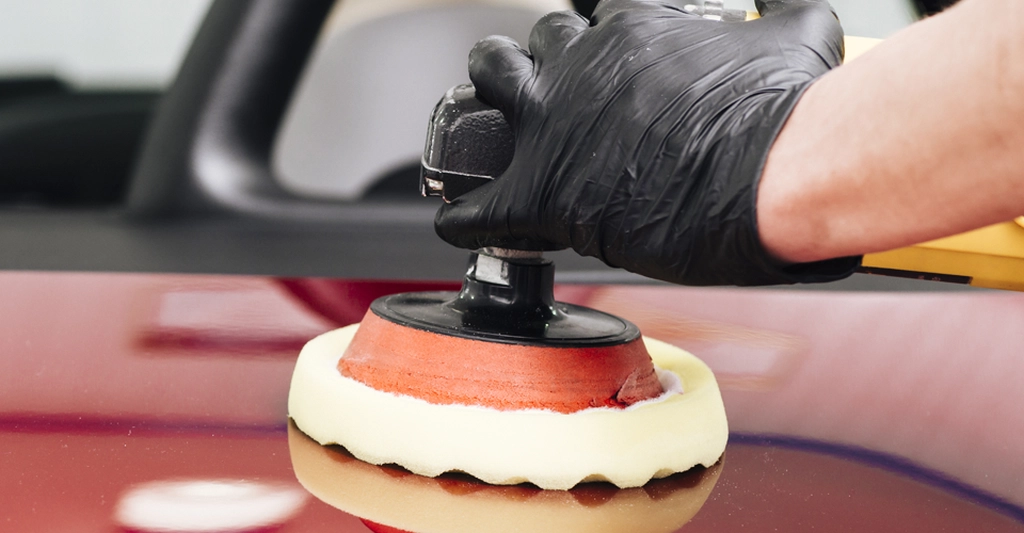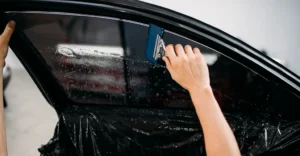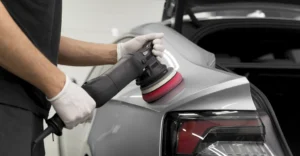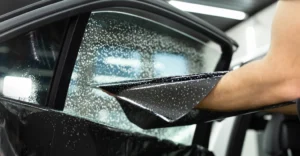If you’ve ever tried to fix swirl marks, scratches, or dull paint on your car, chances are you’ve heard the terms compound and polish. A lot of people use them interchangeably but here’s the truth: they’re not the same thing at all.
Knowing the difference isn’t just car detailing trivia it can literally make or break your paint job. Using the wrong product at the wrong time can lead to more work, poor results, or even damage to your paint’s clear coat.
So, let’s break it all down in simple terms. What exactly is a compound? What does polish do? And how do you know which one to use and when?
What is a Compound?
A compound (often called a rubbing compound) is a highly abrasive product designed to cut through and remove deep defects in your paint. Think of it like sandpaper in cream form it levels out the surface by removing a small amount of the clear coat to eliminate imperfections.
Common Paint Defects a Compound Can Fix:
- Deep Swirl Marks: Usually caused by dirty wash mitts, automated car washes, or rough towels.
- Heavy Scratches: Think car key nicks or brush scrapes from tight parking spots.
- Hard Water Spots: Etching left behind from sprinklers or rainwater with high mineral content.
- Oxidation: Faded, chalky paint from prolonged sun exposure (especially common in the UAE heat).
- Sanding Marks: Scratches left from wet sanding after a repaint.
- Embedded Water Stains: Stains under the clear coat, usually from moisture trapped under low-quality car covers.
Compounds are your go-to product when the paint looks rough, weathered, or heavily damaged. But because they’re aggressive, they must be used with care.
What is a Polish?
A polish is a less abrasive product than a compound. It’s used to refine the paint surface and remove lighter defects. A good polish also brings out the depth, gloss, and clarity of your car’s paint.
What Polishing Helps With:
- Light Swirl Marks: Caused by everyday washing or drying.
- Fine Scratches: Surface-level marks that don’t penetrate the clear coat.
- Faint Water Spots: Mild mineral residue from dried water droplets.
- Light Oxidation: Early signs of fading before it gets serious.
- Post-Compound Finishing: Polishes are often used after compounding to restore a smooth, glossy finish.
If your car is in decent shape but needs a little love to look brand new, polish is your best friend.
When Should You Use Compound vs. Polish?
Here’s an easy way to remember it:
Compounds are for heavy lifting – deep scratches, dull paint, and serious swirl marks.
Polishes are for refining – light scratches, light swirls, and boosting shine.
Use Compound If:
- The paint has deep damage you can feel with your fingernail.
- You see oxidation, especially on the roof, bonnet, or boot.
- You’ve just wet-sanded the surface or had recent bodywork.
- You want to do a multi-stage correction starting with aggressive cutting.
Use Polish If:
- The defects are minor or shallow.
- You’re trying to restore shine and clarity after compounding.
- You want to maintain paint health with less risk of paint removal.
The Smart Way to Start: Always Do a Test Spot
In car detailing, there’s a golden rule:
“Use the least aggressive method that gets the job done.”
That’s why you should always start with a polish on a small section of the paint. If it corrects the defect, great you’ve preserved more of the clear coat. If not, then step up to a compound.
Remember, paint correction removes microns of paint. On average, clear coat is only around 40–50 microns thick. Shaving off too much with aggressive methods can leave your paint vulnerable to clear coat failure especially on horizontal panels like the bonnet, roof, and boot that take the most sun damage in the UAE.
What is Clear Coat Failure & Why Should You Worry?
The clear coat is the outermost layer of your car’s paint system. It protects against UV rays, moisture, and daily wear. If you remove too much during paint correction, you risk burning through or weakening this protective layer.
Clear coat failure appears as:
- Peeling or flaking clear coat
- Faded, cloudy paint patches
- Unrepairable spots that eventually require full repainting
That’s why it’s so important to use the right product, the right tool, and the right technique every time.
Can I Apply Compound or Polish by Hand?
Technically, yes. Realistically, no.
Modern clear coats are too hard for your fingers to apply enough pressure effectively. Applying compound or polish by hand often leads to:
- Uneven correction
- Visible finger marks
- Wasted time and effort
If you’re serious about results, always use a machine polisher like a dual-action (DA) polisher. It ensures consistent results, saves you hours of labour, and avoids hand-induced swirl marks.
Final Thoughts: Compound vs. Polish in the UAE Climate
Living in the UAE, your car’s paint faces intense sun, sand, and heat all of which speed up fading and paint defects. That’s why proper paint care is essential, not just for looks, but also to preserve the value and life of your vehicle.
Whether you’re prepping your car for a full detail or just trying to get rid of unsightly marks, understanding the difference between compound and polish ensures better results and protects your investment.
Need Help with Paint Correction in the UAE?
At MotorHub, our detailing pros use precision tools and products tailored for UAE driving conditions. Whether your car needs a full paint correction, ceramic coating, or just a gloss boost we’ve got you covered.
Protect your car’s paint. Boost your resale value. Drive with pride.



